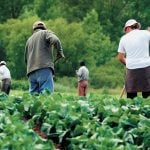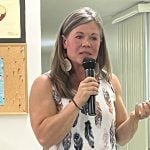Shannacappo is the grand chief of the Southern Chiefs Organization of Manitoba. This is the first in a series of occasional columns designed to better acquaint farmers with native issues.
As the head of an organization that represents 36 First Nations in Manitoba, I would like to begin an urgently needed dialogue.
I thank The Western Producer, the premier agricultural paper in Canada, for the opportunity to begin this communication.
I am a Treaty Indian from the Rolling River Anishinabe First Nation in Manitoba, which is in the farming area south of Riding Mountain National Park.
Read Also

Worrisome drop in grain prices
Prices had been softening for most of the previous month, but heading into the Labour Day long weekend, the price drops were startling.
This dialogue is long overdue and extremely important. For 10 years prior to being elected Grand Chief of the Southern Chiefs Organization this summer, I was Chief at Rolling River. Before that I was involved in tourism development. Our Anishinabe Village at Riding Mountain won international tourism awards.
I have travelled extensively with various organizations, and Manitoba’s First Nations have been visited by academics, environmentalists and investors from virtually every continent.
It is ironic that we have better communication with capitalist investors from China than non-aboriginal farmers living near our boundaries.
This absence of communication does not exist in all areas, but it is common enough that it is an issue that must be addressed.
In Manitoba, the quality of relations between First Nations and non-aboriginal communities varies depending on attitudes of local politicians.
I envy the progress that has been made in Alberta and Saskatchewan. In Alberta, First Nations get a portion of the resource revenues.
In Saskatchewan, the first urban treaty area, land commonly called an urban reserve, was created in 1982 at Prince Albert.
Since then there have been about two dozen urban treaty areas created in that province. In Manitoba, we are still only starting to make progress on that front and it has been an uphill battle. Questions that were answered in Saskatchewan almost a generation ago are still being asked here.
In the 1990s, the Rural Development Institute in Brandon did a population study for rural Manitoba. The projections were shocking.
Almost every community in southwestern Manitoba was projected to suffer a substantial population loss in the decades ahead.
It was unfortunate this study didn’t also look at First Nations because here the trends are reversed.
Populations are growing rapidly. The demographic is the opposite of the rest of rural Manitoba in that often a third to a half of residents are under age 18, and many of the young adults either stay in their First Nation or return home after getting a post-secondary education.
There needs to be a dialogue and initiatives developed to encourage economic development by First Nations and by their young entrepreneurs. I would like to raise these issues with this newspaper’s readers.
This summer Chuck Strahl was appointed minister responsible for Indian and Northern Affairs Canada. To my knowledge, he is the first minister in recent memory to move from agriculture to Indian affairs. Hopefully his background in agriculture will help him put into perspective some of the issues that I will raise.














